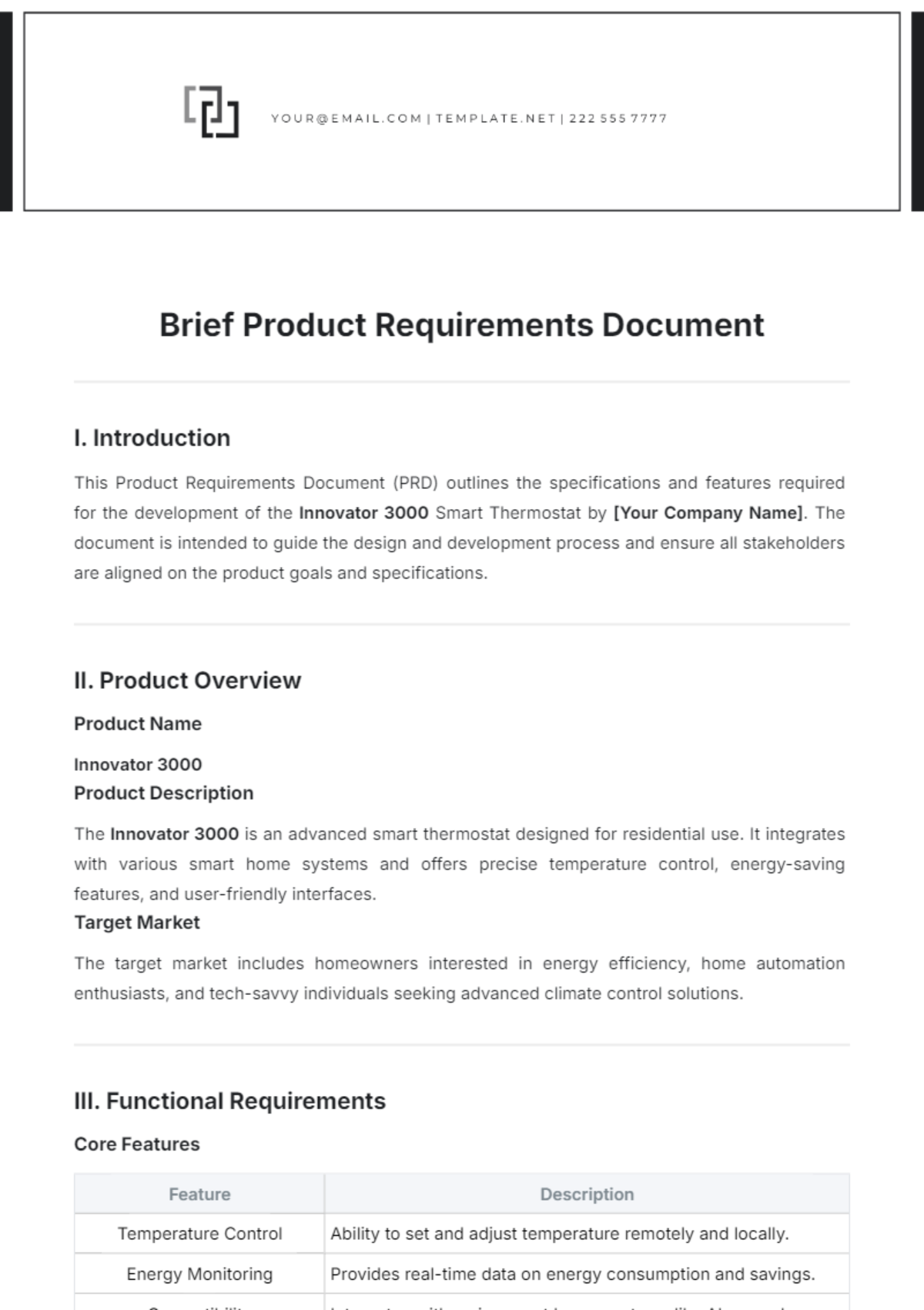Telecommunication Project Management
The key objective of telecommunications project management is to implement high-quality, efficient, and effective communication systems that meet the needs of the end-users while adhering to strict timelines and budget constraints. These projects can range from small-scale implementations to large, nationwide network infrastructures, and managing them requires careful attention to detail, risk management, resource allocation, and communication strategies. This document explores the fundamental components of telecommunications project management, detailing the processes and methodologies necessary to successfully manage these complex projects.
1. Introduction to Telecommunication Project Management
Telecommunications is an integral part of modern life, supporting everything from basic voice calls to high-speed internet, and it plays a crucial role in global connectivity. Managing telecommunications projects involves dealing with a variety of systems and technologies such as mobile networks, broadband infrastructure, satellite communications, and cloud-based services. Effective project management ensures these systems are developed, integrated, and deployed in a timely, cost-effective, and technically proficient manner.
1.1. Importance of Project Management in Telecommunications
Telecommunication projects are inherently complex, requiring the coordination of different stakeholders, multiple technical domains, and careful resource management. The importance of project management in this industry cannot be overstated, as poor project execution can lead to significant financial losses, missed opportunities, system failures, and disruption in communication services. Telecommunication infrastructure projects, in particular, require precise planning and execution to ensure minimal downtime, quality control, and smooth integration of multiple technologies.
Effective project management in telecommunications helps avoid issues like:
Project Delays: Delay in installation and deployment can impact businesses and end-users who depend on communication services.
Overruns in Budget: Failure to control costs can lead to financial losses and impact the profitability of the project.
Subpar Quality: Ineffective testing and quality assurance processes may lead to inferior products, poor network performance, or system failures.
Non-Compliance: Telecommunications projects must comply with various legal, regulatory, and technical standards. Managing these aspects properly is essential for project success.
1.2. Role of [Your Company Name] in Telecommunications Projects
[Your Company Name] has developed a comprehensive approach to telecommunications project management that is both adaptable and rigorous, ensuring that every project, whether large or small, meets the necessary performance, quality, and compliance standards. Our company’s experience covers a wide range of telecommunication services, including the installation of mobile and fiber optic networks, setting up satellite communications infrastructure, and providing cloud-based communication solutions. With our extensive expertise, we consistently deliver projects that help drive the connectivity and communication needs of our clients.
At [Your Company Name], we adopt best practices from the industry to streamline operations and mitigate potential risks in every project we handle. From large-scale national network deployments to small-scale local communication upgrades, we ensure that each project is completed on time and within budget, delivering high-quality solutions that stand the test of time.
2. Key Phases of a Telecommunication Project
Telecommunication project management follows a structured life cycle, usually comprising five distinct phases: Initiation, Planning, Execution, Monitoring & Control, and Closure. These phases allow project managers to organize tasks, allocate resources efficiently, and ensure that all deliverables meet the agreed-upon specifications.
2.1. Initiation Phase
The initiation phase serves as the foundation for the entire project. It is during this phase that the project is formally defined, and critical decisions about scope, objectives, and key stakeholders are made. Initiation focuses on gathering all the necessary information to assess the project's feasibility and set it in motion.
Key activities in the initiation phase include:
Project Charter Creation: The project charter is a formal document that outlines the project's objectives, stakeholders, expected deliverables, and scope. This document serves as the agreement between the project team and the stakeholders on what the project will accomplish.
Feasibility Study: A feasibility study assesses the technical, financial, and operational feasibility of the project. It determines if the project is worth pursuing based on current resources, timelines, and external constraints.
Stakeholder Analysis: Identifying all individuals, groups, or organizations that may affect or be affected by the project is crucial. This helps in establishing communication channels and understanding the expectations of each stakeholder.
Deliverables in the initiation phase include:
Approved Project Charter
High-level Project Timeline
Initial Risk Assessment
Feasibility Report
2.2. Planning Phase
Once the project has been formally initiated, the planning phase begins. This phase is critical because it establishes the roadmap that guides the project through its various stages. Detailed planning ensures that all resources are adequately allocated, timelines are set, and risks are identified early.
Key activities in the planning phase include:
Scope Definition: Clearly defining the scope of the project is essential to avoid scope creep later on. This involves outlining the work required to complete the project, including all deliverables, tasks, and milestones.
Project Schedule Creation: A detailed project schedule is created to allocate specific tasks, establish timelines, and define dependencies between activities. A Gantt chart or other project management tools can help visualize the project schedule and keep all team members aligned.
Budget Estimation: A thorough budget estimation is critical for determining the overall financial resources needed for the project. This includes hardware and software procurement costs, labor, and contingency funds for unforeseen expenses.
Task | Estimated Cost ($) | Duration (Weeks) |
|---|---|---|
Equipment Procurement | 500,000 | 12 |
Site Preparation | 150,000 | 6 |
Network Design and Setup | 750,000 | 22 |
Testing and Quality Assurance | 200,000 | 10 |
Project Management and Oversight | 120,000 | 24 |
Risk Management Planning: Identifying potential risks such as technological changes, resource shortages, vendor delays, or legal/regulatory issues, and planning for risk mitigation strategies are vital at this stage.
Deliverables in the planning phase include:
Detailed Project Plan
Resource Allocation Plan
Budget Breakdown
Risk Management Plan
2.3. Execution Phase
The execution phase is where the bulk of the work occurs. During this phase, teams implement the project plan by executing tasks, building systems, and ensuring that the telecommunications infrastructure is properly set up. Project managers coordinate and communicate with teams to ensure tasks are completed on time, within scope, and according to specifications.
Key activities in the execution phase include:
Team Coordination: Coordination is essential for ensuring that all team members are aligned and that each has the resources they need to complete their tasks. Regular meetings, status updates, and communication tools are used to ensure efficiency.
System Design, Development, and Deployment: Actual work on the telecommunications system, such as network setup, installation of equipment, software integration, and infrastructure build-out, takes place during this phase.
Quality Assurance and Testing: Throughout the execution phase, testing is conducted to verify that systems function as intended and meet quality standards. Rigorous testing is crucial in telecommunications projects to ensure that the systems are robust and reliable.
2.4. Monitoring & Control Phase
Throughout the execution phase, project managers also monitor the project's progress against the planned scope, schedule, and budget. Monitoring ensures that any deviations from the plan are identified early, and corrective actions are taken.
Key activities in the monitoring and control phase include:
Performance Monitoring: Key Performance Indicators (KPIs) such as cost variance, schedule variance, and technical performance are tracked to assess project health.
Issue Tracking: Identifying any issues or blockers that could delay the project and addressing them promptly is essential.
Quality Control: Ensuring that quality standards are maintained through ongoing testing and review processes.
Communication with Stakeholders: Regular updates are provided to all stakeholders, ensuring transparency in project progress and addressing any concerns.
2.5. Closure Phase
The closure phase marks the conclusion of the project. During this phase, all work is finalized, documentation is completed, and the project is formally handed over to the client.
Key activities in the closure phase include:
Final System Handover: Ensuring the telecommunications system is operational and ready for use, including the delivery of user manuals, training materials, and necessary documentation.
Post-Implementation Review: A review is conducted to assess the overall success of the project, identifying lessons learned and areas for improvement.
Final Report: The project manager creates a final report summarizing the entire project lifecycle, including challenges faced, successes achieved, and overall performance.
Deliverables in the closure phase include:
Final Project Report
Final System Handover
Post-Implementation Review
3. Key Components of Telecommunication Project Management
Effective project management in the telecommunications sector requires managing a range of components, including risk management, resource allocation, communication, and quality control. These components are crucial to ensuring the successful completion of the project.
3.1. Risk Management
Risk management is one of the most important aspects of managing a telecommunications project. Risks can arise at any stage of the project, from unexpected technological challenges to external factors such as market shifts or regulatory changes.
Risk Identification: Identifying potential risks early on is essential to avoid surprises during the execution phase.
Risk Analysis: Risks must be analyzed in terms of their probability and potential impact on the project’s schedule, budget, and quality.
Risk Mitigation: Developing strategies to mitigate the identified risks, such as creating backup plans, sourcing alternative suppliers, or securing additional resources.
3.2. Resource Management
Effective resource management ensures that human, financial, and material resources are available and efficiently utilized throughout the project lifecycle. Key components of resource management include:
Human Resource Management: Allocating appropriate talent with the right skills and experience to various tasks.
Financial Resource Allocation: Ensuring the project stays within budget, managing financial risks, and avoiding unnecessary costs.
Material Resource Management: Overseeing the procurement of equipment, tools, and technology required for project success.
3.3. Communication Management
Clear and effective communication is paramount in any project. This is especially true for telecommunications projects that involve multiple teams, vendors, and stakeholders. Strong communication management helps keep all parties aligned and ensures the smooth flow of information.
Stakeholder Communication: Regular updates to stakeholders ensure that expectations are aligned and that everyone is informed of progress and challenges.
Internal Team Communication: Communication within the project team helps clarify tasks, priorities, and potential roadblocks.
Documentation: Proper documentation at all stages ensures that information is captured and accessible to all stakeholders.
3.4. Quality Management
Quality management involves defining and ensuring the systems meet specific standards and function as required. It includes:
Defining Quality Standards: Establishing the performance and technical standards that the system must meet.
Quality Assurance: Ensuring processes are in place to monitor quality throughout the project lifecycle.
Quality Control: Continuously testing systems to verify that the project meets quality standards.
4. Challenges in Telecommunication Project Management
Telecommunications projects, while offering substantial rewards in terms of improving connectivity and enabling communication advancements, come with a unique set of challenges. These challenges arise from the complex nature of the technology, the diversity of stakeholders involved, the high stakes of meeting deadlines and budgets, and the regulatory frameworks that govern the industry. Understanding and mitigating these challenges is a critical aspect of successful project management in the telecommunications sector. Below are some of the most common and significant challenges faced during telecommunications project management:
4.1. Technological Complexity
Telecommunications projects often involve the integration of cutting-edge technologies, which brings about significant technical challenges. These projects may include the deployment of advanced network infrastructure like 5G, fiber optic systems, satellite communication, or cloud-based services. The rapid pace of technological advancements makes it difficult for project managers to stay ahead of emerging trends and ensure that their projects incorporate the most efficient and reliable technologies.
Key aspects of technological complexity include:
Integration of Legacy Systems: Many telecommunications systems are built on legacy technologies that need to be integrated with newer systems. This integration can be complex, requiring detailed planning and testing to ensure that the older and newer technologies work together seamlessly.
Scalability and Flexibility: Telecommunication systems must be scalable to accommodate increasing demands in terms of data traffic and user base. Designing systems that are flexible enough to adapt to future technological advancements is a constant challenge.
Innovation and Obsolescence: The pace of innovation in telecommunications can render technologies obsolete quickly. Project managers must ensure that they select technologies that offer long-term value, while also being prepared for potential upgrades or changes during the project lifecycle.
High Reliability and Low Latency: Telecommunication systems, especially those used for critical communications like emergency services or military operations, must function with high reliability and minimal latency. Achieving these standards requires meticulous planning, testing, and system optimization.
Cybersecurity Concerns: With the growing threat of cyber-attacks, ensuring the security of telecommunications infrastructure is paramount. Project managers need to implement robust security measures to safeguard sensitive data and prevent system breaches, which can undermine the integrity of the project.
Given these complexities, it is critical that project managers stay informed about the latest developments in telecommunications technology and integrate these advancements into their projects without compromising the overall project scope, budget, or timeline.
4.2. Budget Overruns
Budget overruns are a pervasive challenge in large-scale telecommunications projects. These projects often have high capital expenditures, and unforeseen circumstances or underestimations can easily result in costs exceeding the initial budget. This can lead to financial strain on the project and its stakeholders.
Contributing factors to budget overruns include:
Unforeseen Equipment and Material Costs: Telecommunications projects often require specialized equipment and materials that may experience price fluctuations due to market conditions or supply chain disruptions. These increases can directly impact the project's bottom line.
Delays and Project Extensions: Delays in the execution phase, whether due to technical difficulties, vendor delays, or external factors like permitting issues, can lead to increased labor and operational costs. The longer the project takes, the higher the costs can climb, especially when additional resources or overtime labor is required.
Scope Creep: Changes in the project's scope can also contribute to budget overruns. This can occur when stakeholders request additional features, functionalities, or modifications to the original plan, leading to higher costs and extended timelines. Managing scope creep through strict scope control is essential to keeping the project within budget.
Regulatory Compliance Costs: Telecommunications projects must comply with a wide range of local, national, and international regulations. Obtaining licenses, certifications, and permits can incur additional costs, and failing to adhere to regulatory standards can result in fines or penalties.
Risk Mitigation Costs: Implementing a robust risk management strategy to address potential risks, such as system failures, cybersecurity breaches, or unexpected delays, often involves additional costs for contingency planning, backup systems, and insurance. These costs should be anticipated and incorporated into the initial budget.
To mitigate budget overruns, project managers must implement careful financial monitoring and control processes, ensure proper forecasting, and maintain a contingency fund for unforeseen circumstances. Regular reviews and financial tracking throughout the project lifecycle are key to preventing budget issues.
4.3. Regulatory Compliance
The telecommunications industry is highly regulated, with complex legal frameworks governing the use of spectrum, network infrastructure, data security, and consumer protection. Navigating this regulatory environment is one of the biggest challenges project managers face in the telecommunications sector.
Key regulatory challenges include:
Spectrum Licensing: Telecommunication projects, especially those involving wireless communications, require spectrum licenses granted by governmental regulatory authorities. Obtaining these licenses can be a lengthy and complex process, involving negotiations, bids, and compliance with specific usage regulations. Delays in obtaining the required spectrum licenses can significantly delay project timelines.
Permitting and Environmental Considerations: Many telecommunications projects involve construction activities, such as building cell towers, laying fiber optic cables, or setting up new infrastructure. These activities require permits from local, state, and national authorities. Environmental impact assessments may also be necessary, which can delay project timelines if not handled efficiently.
Data Protection and Privacy: Telecommunications companies handle vast amounts of personal and sensitive data, and must comply with data protection laws such as the General Data Protection Regulation (GDPR) in the European Union or similar regulations in other regions. Ensuring the privacy and security of data collected during the project is a key concern, requiring robust cybersecurity measures and compliance strategies.
Telecommunication Standards and Licensing: Compliance with international telecommunication standards (e.g., 3GPP for mobile networks) is essential to ensure interoperability between systems. Additionally, telecommunications providers must adhere to licensing requirements that may differ depending on the country or region.
Failure to comply with regulatory requirements can result in fines, project delays, and even the cancellation of the project. Therefore, project managers must stay informed about relevant regulations and incorporate compliance into their project planning from the outset.
4.4. Stakeholder Management
Telecommunications projects are typically large, involving multiple stakeholders, each with their own interests, expectations, and requirements. Managing stakeholder relationships can be a complex and time-consuming task. These stakeholders may include government agencies, local communities, vendors, contractors, clients, and the end-users of the telecommunications systems.
Challenges in stakeholder management include:
Diverse Stakeholder Interests: Different stakeholders may have conflicting interests, such as government bodies focused on regulatory compliance, local communities concerned about the environmental impact of infrastructure, and clients looking for advanced technical solutions. Balancing these interests requires careful negotiation and conflict resolution skills.
Communication and Transparency: Effective communication is essential to ensure that all stakeholders are kept informed of project progress, challenges, and changes. Transparency in communication helps build trust, but ensuring that the right information reaches the right people at the right time can be a logistical challenge.
Stakeholder Engagement and Buy-In: Securing buy-in from all stakeholders, especially when facing resistance to changes in infrastructure or technology, can be difficult. Ensuring that stakeholders are engaged throughout the project and that their concerns are addressed proactively is key to avoiding conflicts.
Managing External Dependencies: Many telecommunications projects rely on third-party vendors or contractors for the supply of equipment, technical services, or labor. Delays or failures on the part of these external parties can have a significant impact on the project. Effective coordination and monitoring of these external dependencies are crucial.
Effective stakeholder management requires clear communication, a strong understanding of stakeholder needs, and the ability to navigate complex relationships. Project managers must engage stakeholders early in the process, manage expectations, and ensure that any conflicts are resolved swiftly to maintain project momentum.
4.5. Risk Management
Telecommunication projects face various risks throughout their lifecycle, from technical failures to external disruptions. Effective risk management is critical to minimize the potential negative impact of these risks on the project's timeline, budget, and quality.
Key risks in telecommunication projects include:
Technological Risks: These risks involve the possibility of failure in the technology or infrastructure being deployed, such as system crashes, equipment malfunctions, or integration issues. These risks can be mitigated through rigorous testing, quality assurance, and redundancy planning.
Supply Chain Risks: Telecommunications projects rely heavily on a variety of vendors and suppliers for equipment and materials. Delays in the supply chain, shortages of critical components, or logistical disruptions can delay the project and incur additional costs.
Political and Legal Risks: Changes in political environments, government policies, or regulatory requirements can have a significant impact on telecommunications projects. For example, changes in spectrum allocation or new regulations affecting network infrastructure can cause delays or necessitate redesigns.
Natural Disasters and Environmental Risks: Natural disasters, such as hurricanes, earthquakes, or floods, can severely disrupt telecommunications projects, especially those involving physical infrastructure like towers or cables. Additionally, environmental concerns, such as land use restrictions, can cause project delays.
Effective risk management involves identifying potential risks early, assessing their likelihood and impact, and developing mitigation strategies. Regular risk assessments, monitoring, and the establishment of contingency plans are essential to managing these challenges.
5. Conclusion
Telecommunication Project Management is a specialized field that requires careful planning, effective resource management, and strong communication skills. By adopting best practices and leveraging the right methodologies, project managers can ensure that telecommunications projects are completed on time, within budget, and to the highest quality standards. At [Your Company Name], we are committed to delivering innovative and reliable telecommunications systems, and we continue to lead the industry by applying our extensive expertise to every project.

















































